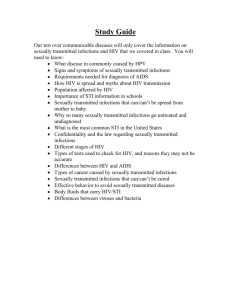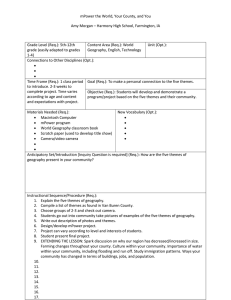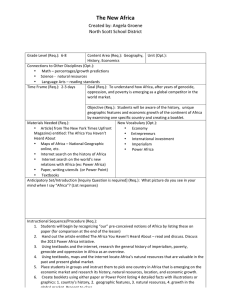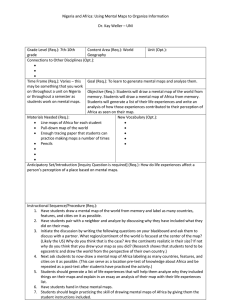Sexually Transmitted Infections and Diseases in the United States
advertisement
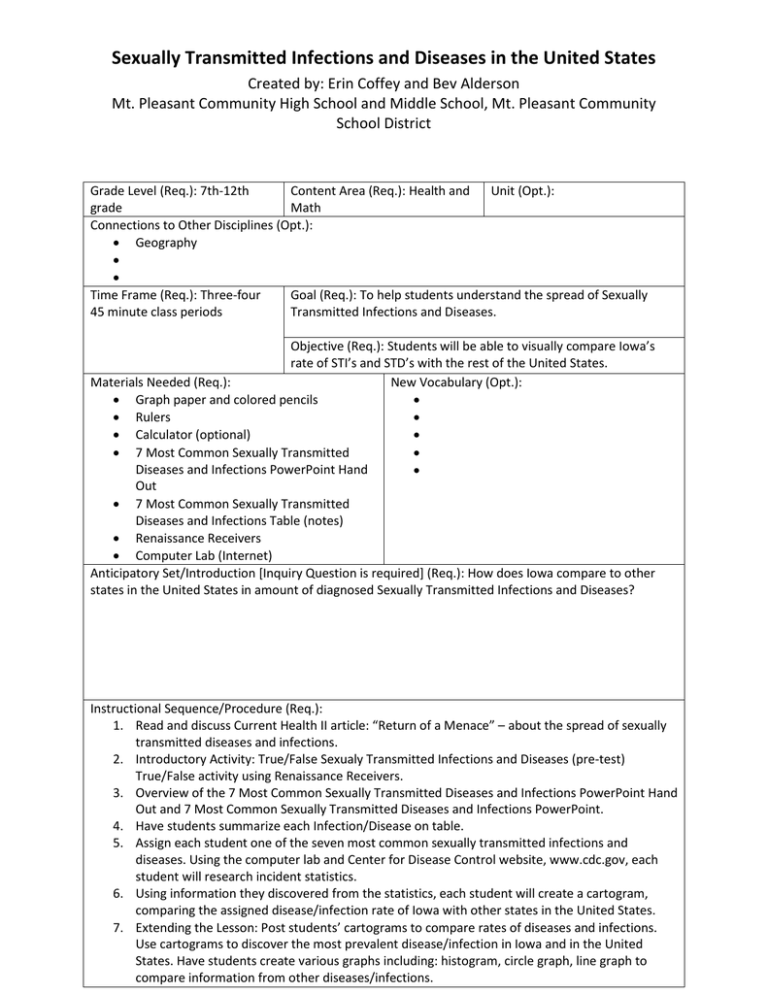
Sexually Transmitted Infections and Diseases in the United States Created by: Erin Coffey and Bev Alderson Mt. Pleasant Community High School and Middle School, Mt. Pleasant Community School District Grade Level (Req.): 7th-12th Content Area (Req.): Health and Unit (Opt.): grade Math Connections to Other Disciplines (Opt.): • Geography • • Time Frame (Req.): Three-four Goal (Req.): To help students understand the spread of Sexually 45 minute class periods Transmitted Infections and Diseases. Objective (Req.): Students will be able to visually compare Iowa’s rate of STI’s and STD’s with the rest of the United States. Materials Needed (Req.): New Vocabulary (Opt.): • Graph paper and colored pencils • • Rulers • • Calculator (optional) • • 7 Most Common Sexually Transmitted • Diseases and Infections PowerPoint Hand • Out • 7 Most Common Sexually Transmitted Diseases and Infections Table (notes) • Renaissance Receivers • Computer Lab (Internet) Anticipatory Set/Introduction [Inquiry Question is required] (Req.): How does Iowa compare to other states in the United States in amount of diagnosed Sexually Transmitted Infections and Diseases? Instructional Sequence/Procedure (Req.): 1. Read and discuss Current Health II article: “Return of a Menace” – about the spread of sexually transmitted diseases and infections. 2. Introductory Activity: True/False Sexualy Transmitted Infections and Diseases (pre-test) True/False activity using Renaissance Receivers. 3. Overview of the 7 Most Common Sexually Transmitted Diseases and Infections PowerPoint Hand Out and 7 Most Common Sexually Transmitted Diseases and Infections PowerPoint. 4. Have students summarize each Infection/Disease on table. 5. Assign each student one of the seven most common sexually transmitted infections and diseases. Using the computer lab and Center for Disease Control website, www.cdc.gov, each student will research incident statistics. 6. Using information they discovered from the statistics, each student will create a cartogram, comparing the assigned disease/infection rate of Iowa with other states in the United States. 7. Extending the Lesson: Post students’ cartograms to compare rates of diseases and infections. Use cartograms to discover the most prevalent disease/infection in Iowa and in the United States. Have students create various graphs including: histogram, circle graph, line graph to compare information from other diseases/infections. 8. 9. 10. 11. 12. 13. 14. 15. 16. 17. 18. 19. 20. Formative Evaluation (Req.): Check for understanding of what STI/STDs are and their differences Assessment (Req.): Cartograms of the diseases/infections Iowa Core Curriculum Standards Used (Req.): • Geography, grade 9-12: Understand the use of geographic tools to locate and analyze information about people, places, and environments. • Geography, grade 9-12: Understand how physical and human characteristics create and define regions. • Geography, grade 9-12: Understand how human factors and the distribution of resources affect the development of society and the movement of populations. • Geography, grade 9-12: Understand how human actions modify the environment and how the environment affects humans. • Geography, grade 9-12: Understand how culture affects the interactions of human populations through time and space. • • • • • Common Core Curriculum Standards Used (Opt.): • • • • • NGS Standards Used (Req.): • How to use maps and other geographic representations, geospatial technologies, and spatial thinking to understand and communicate information • The physical and human characteristics of places • How culture and experience influence people’s perceptions of places and regions • The characteristics, distribution, and migration of human populations on Earth’s surface • The characteristics, distribution, and complexity of Earth’s cultural mosaics • How human actions modify the physical environment • How physical systems affect human systems • The changes that occur in the meaning, use, distribution, and importance of resources • • Five Themes of Geography Used (Req.): • Location • Place • Human-Environmental Interaction • • 21st Century Universal Constructs (Opt.): Other Disciplinary Standards (Opt.): • • • • • Other Essential Information (Opt.): Other Resources (Opt.): • • • • School District Standards and Benchmarks (Opt.): • • •
